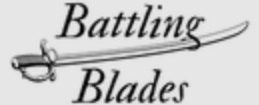Knights, those armored warriors of yore, are often depicted wielding magnificent swords, the very image of chivalry and combat prowess. But did all knights use the same sword? Did they prefer brutal choppers or elegant thrusters? The answer, like many things in history, is far from simple. This guide delves into the diverse arsenal of blades wielded by knights throughout history, exploring their evolution, purpose, and even some popular misconceptions.
From Early Blades to Knightly Armament: A Timeline of Swordsmanship
Understanding the types of swords knights used requires a brief historical journey. Here’s a glimpse into the evolution of blades used by these armored warriors:
- Early Medieval Period (5th-10th centuries): Simple, single-edged swords like the spatha and seax reigned supreme, used primarily for slashing and hacking. These blades were primarily tools of war, not the refined weapons of later eras.
- High Medieval Period (11th-13th centuries): The Arming sword emerged, a single-handed, double-edged marvel of balance and versatility. This cruciform sword, with its cross-shaped hilt, became the iconic weapon of the armored knight, adept at both cutting and thrusting.
- Late Medieval Period (14th-15th centuries): Two-handed behemoths like the longsword gained prominence. These longer blades offered increased reach and power, perfect for cleaving through armor and formations. Specialized swords like the falchion (single-edged, curved) and estoc (thin, rigid for thrusting) also saw use.
- Renaissance Period (16th century): Swords continued to evolve, with the rapier, a light, thrust-centric blade, emerging as the weapon of choice for noble duelists. Broadswords with wider blades provided devastating cuts, while the two-handed greatsword remained a fearsome battlefield presence.
The Most Commonly Used Swords by Knights
Though many swords graced the knightly belt, three stand out for their prevalence and impact:
1. Arming Sword: This versatile single-handed sword was the knight’s go-to weapon for close combat. Its balanced blade handled cuts and thrusts equally well, and its cruciform hilt provided excellent control. The arming sword remained a mainstay for centuries, symbolizing the knightly ideal of skill and adaptability.
2. Longsword: As armor grew heavier, so did the need for greater power. The longsword, with its longer blade and two-handed grip, delivered devastating blows capable of splitting both flesh and metal. Its versatility, allowing for a range of attack techniques, made it a dominant weapon on the battlefield.
3. Greatsword: While not as common as the other two, the greatsword was a true force of nature. This massive two-handed weapon, sometimes wielded by even single knights, could cleave through entire ranks of soldiers. Its sheer size and power demanded immense strength and skill, making it a symbol of raw martial prowess.
Beyond the Big Three: Other Notable Knightly Swords
While the arming sword, longsword, and greatsword were the workhorses of knightly armament, several other blades deserve mention:
- Falchion: This single-edged, curved sword offered excellent chopping power, popular with knights on horseback and for breaching armor.
- Estoc: Designed primarily for thrusting, the estoc’s thin blade could penetrate even the strongest armor joints, making it a valuable tool against heavily armored opponents.
- Dussack: A versatile Swiss sword, the dussack combined cutting and thrusting capabilities with the ability to parry and hook, making it a favorite among mercenaries and knights alike.
- Rapier: While not as common on the battlefield, the rapier’s light weight and agility made it the weapon of choice for noble duelists and self-defense in the Renaissance period.
FAQs: Unraveling the Myths and Misconceptions
The world of knightly swords is shrouded in some common misconceptions. Let’s address some of the most prevalent ones:
- Did all knights use the same sword? No, the type of sword a knight used depended on various factors, including the period, armor trends, personal preference, and even battlefield role.
- Were swords the primary weapon of knights? While swords held symbolic significance, lances and poleaxes were often the primary weapons on the battlefield, especially for mounted knights.
- Were all swords incredibly heavy and difficult to wield? Not all swords were behemoths. Arming swords and rapiers were surprisingly light and agile in skilled hands.
- Are swords depicted in movies and games historically accurate? (continued) more precise footwork and controlled thrusts. Remember, real-life combat prioritizes survival over cinematic spectacle.
Conclusion: A Legacy Forged in Steel
The swords wielded by knights were more than just tools of war; they were symbols of status, skill, and the chivalric code. Studying their evolution and diversity offers a captivating glimpse into the multifaceted world of medieval and Renaissance combat. While modern warfare has long rendered swords obsolete, their legacy lives on in museums, historical re-enactments, and the captivating stories of knights and their blades. So, the next time you see a knightly depiction, don’t just admire the shining steel; take a moment to appreciate the rich history and complex reality behind those iconic swords.
